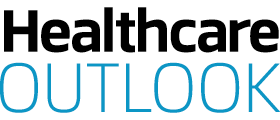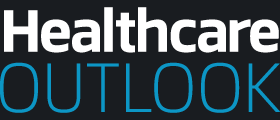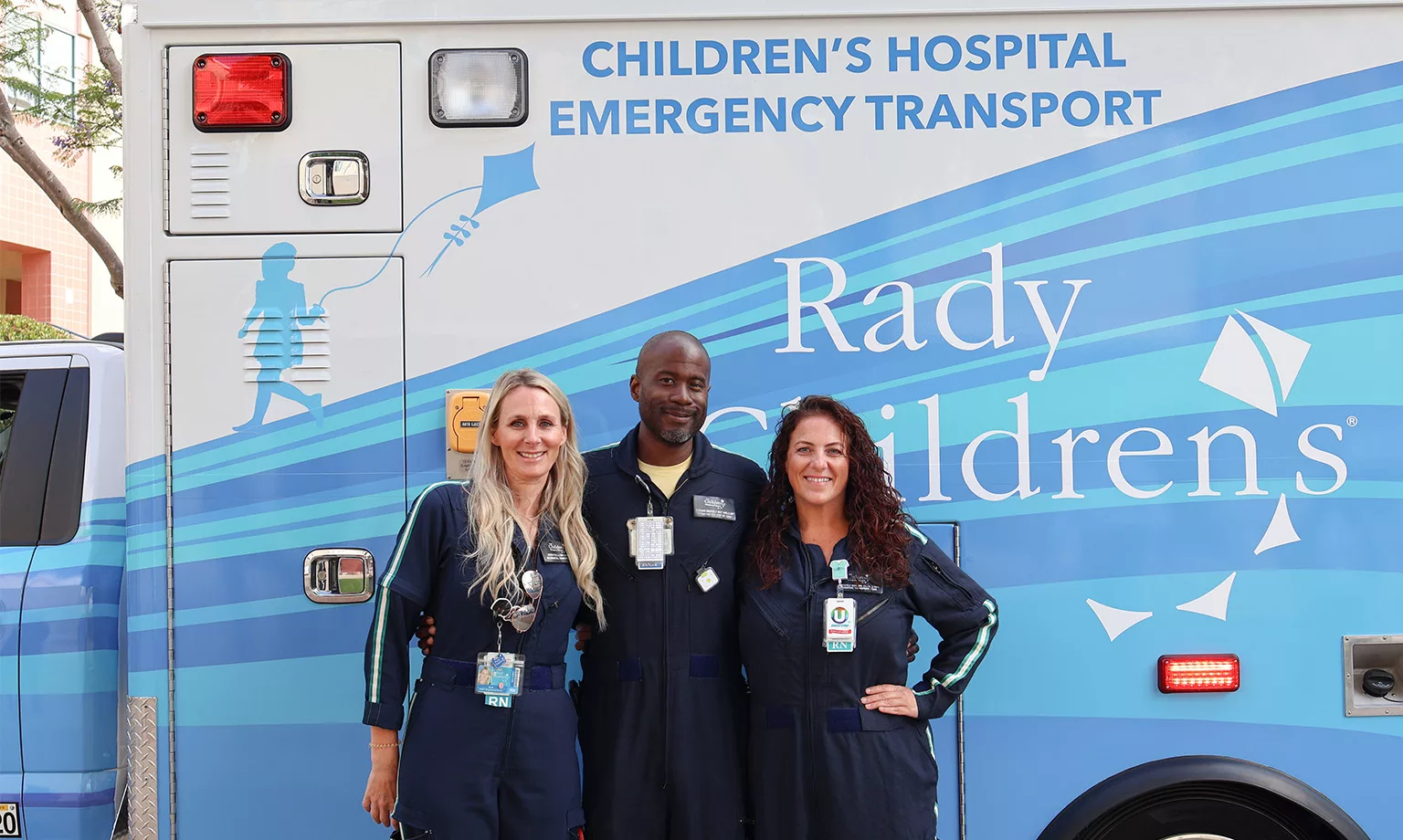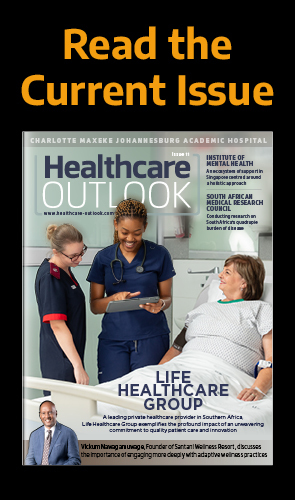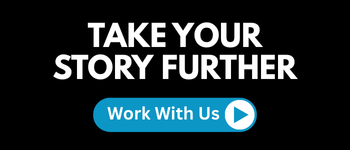SHARING SUCCESS
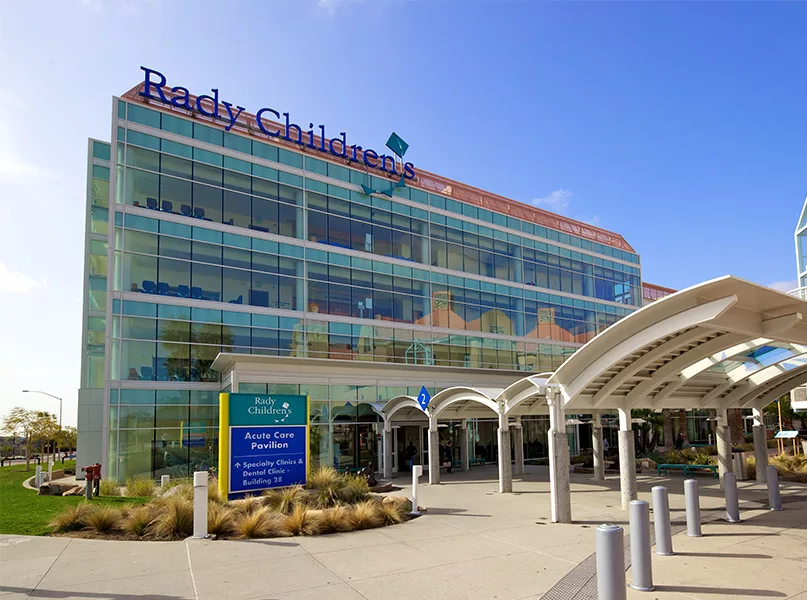
People are our most valuable resource, and everyone here is committed to providing high-quality care for our patients. This runs in the veins, the DNA, and the culture of our institution, and is what makes Rady Children’s so incredibly special.
Nicholas Holmes, M.D., Senior Vice President and COO, Rady Children’s Hospital
STANDING OUT FROM THE CROWD
“As the only acute care provider for children in the region, if your child is sick anywhere within a 75-mile radius and you require high-level care, you’re going to end up coming to our facility in some capacity,” says Holmes.
As a result, Rady Children’s has been able to develop strong partnerships with many local adult healthcare institutions that don’t routinely provide pediatric acute care. A particular focus of the hospital is to share its unparalleled knowledge more widely.
“We consider ourselves experts in pediatrics for the region, so we make sure we have strong collaborations and associations, and that our expertise is readily available.”
Rady Children’s unique, child-centered mission imbues the whole organization with an innate sense of altruism, tenderness, and goodwill.
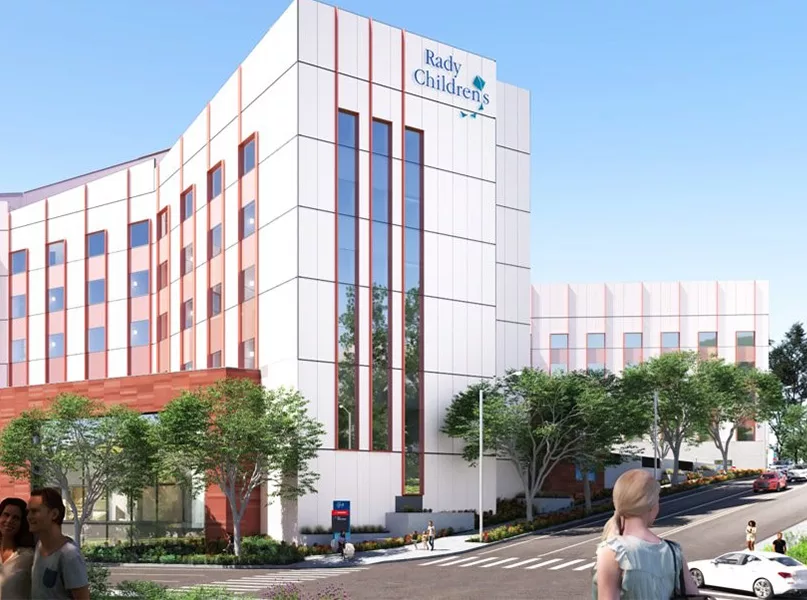
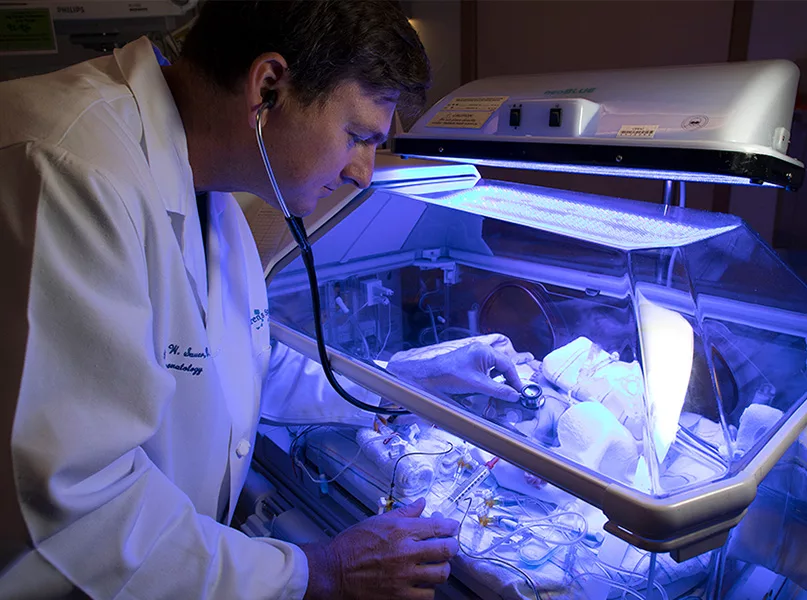
“What makes us special is that every single person within the hospital knows that we’re here to take care of children. We have team members who never see patients at all, but it doesn’t matter what job people have because everyone knows they have a role to play,” explains Dr. Holmes.
“Our sense of unity towards a shared goal is palpable when you walk around and talk to people here, and that’s something that makes us incredibly unique. It sets us apart from any other children’s hospital in the country.”
Additionally, Rady Children’s aids local communities through its in-house Children’s Hospital Emergency Transport (CHET) team.
CHET’s pediatric and neonatal teams respond to medical emergencies and hospitals across the region to stabilize and transport seriously ill children to a Rady Children’s facility.
“Knowing what a profound impact you can have on a child’s life by doing a very small thing is really gratifying. The fact you can change the developmental potential of an individual and lead them onto a path of success is incredible,” reflects Dr. Holmes.
TRAINING THE LEADERS OF TOMORROW
Since Rady Children’s first opened its doors in 1954, its mission has been to restore, sustain, and enhance the health and developmental potential of children through excellence in care, education, research, and advocacy.
Therefore, the hospital cultivates a strong commitment and dedication to graduate medical education. In partnership with the University of California San Diego (UCSD) School of Medicine, trainees receive the utmost care and best-in-class training.
“Our faculty and physicians, the majority of whom are from UCSD, as well as our programs and subspecialty fellowship training, impart key knowledge that enables us to educate the next generation of leaders,” outlines Holmes.
With a focus on sharing knowledge, much like the hospital’s community partnerships with local adult healthcare institutions, Rady Children’s prioritizes a collaborative approach.
“We don’t want to keep secrets as all our work relates to the best way to take care of children. It’s important, especially when we have renowned expertise not just regionally but nationally, to make sure we don’t keep that education to ourselves.”
The hospital is considered a prominent pediatric academic medical center and has been published in many recognized academic journals. Its trainees are encouraged to go above and beyond to contribute to the medical community.
Additionally, the hospital showcases its leading-edge clinical work at pediatric medical specialty society meetings to ensure that this information is distributed widely.
“We have many partnerships with academic institutions, locally as well as nationally. Making sure we’re part of the process of sharing information is imperative, integral, and foundational.”
This applies to Rady Children’s specialist graduate medical education programs, including nursing and therapy courses, alongside the training of technicians, technologists, radiologists, and surgical technologists.
CARDIAC CARE PROGRAM
Rady Children’s superb cardiovascular surgery program, specializing in congenital heart disease, has boasted a state-of-the-art cardiothoracic intensive care unit (CTICU) on its San Diego Campus since 2013.
Approximately four percent of the US population suffers from congenital heart disease. Parents are often relieved to discover that Rady Children’s offers surgical options to help their child.
However, prior to 2015, the hospital did not have the ability to carry out heart transplants. As an executive within the hospital, Dr. Holmes, alongside his colleagues, identified an opportunity for development.
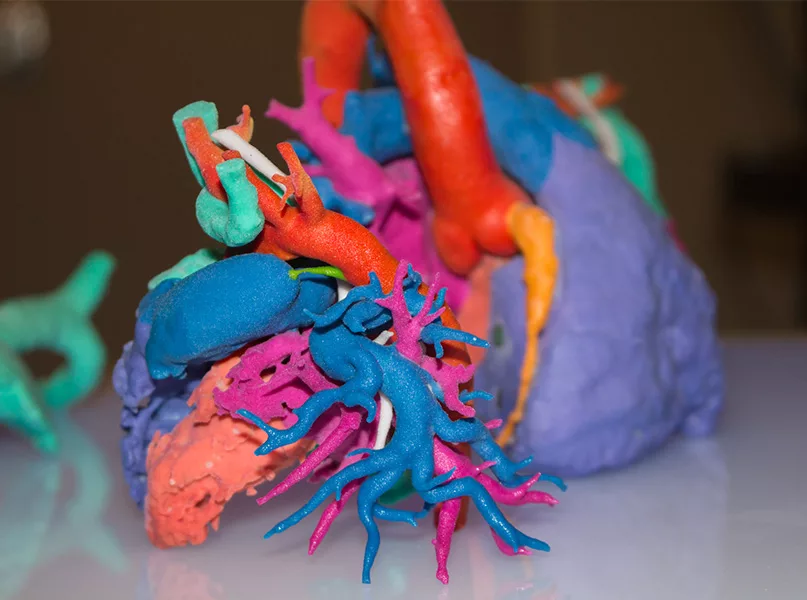
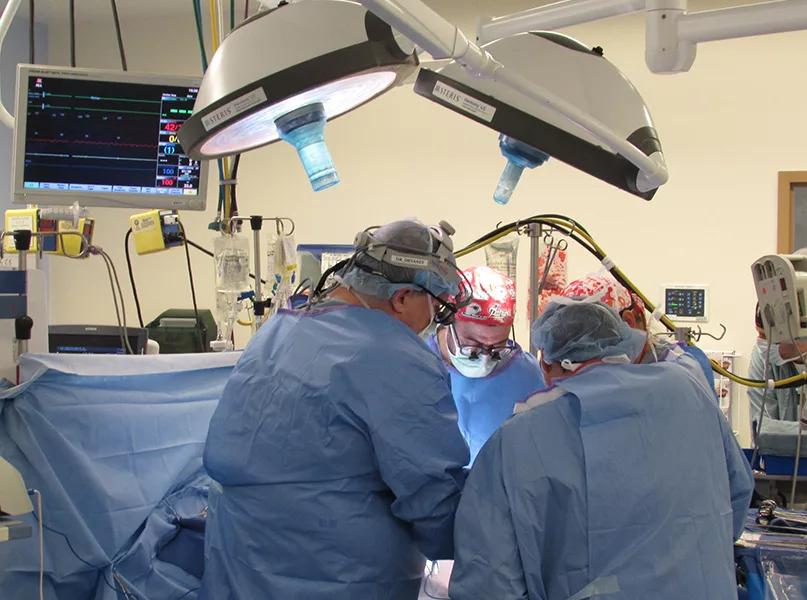
“I remember the words of Dr. Gail Knight, our Chief Medical Officer and a neonatologist. It would cause her angst to need to transfer a neonate with a congenital heart defect to another institution for a cardiac transplant knowing it was a great burden for the families to leave the region, but it was the baby’s best chance,” reflects Dr. Holmes.
Fast-forward to today, and the cardiac transplant program at Rady Children’s is well-established and extremely successful. Thanks to a range of philanthropic and executive support, the Rady Children’s Heart Institute has been established across the organization within recent years.
“It was due to our covenant to the local community that we implemented the cardiac transplant program; it was the last piece of the puzzle. In terms of investment, the program is majorly serving the community and families.”
The Rady Children’s Heart Institute boasts myriad accolades, as the first in San Diego to have a 3D heart-modeling program, the first in the world to perform a nonsurgical, catheter-only procedure for single-ventricle congenital heart disease, and the designated Center of Excellence for California Children’s Services (CCS).
Heading up the cardiovascular surgery program within the Rady Children’s Heart Institute is Dr. John Nigro, a cardiothoracic and heart transplant surgeon with an interest in complex neonatal heart surgery.
“Dr. Nigro can do things that not many people can, and his outcomes are outstanding. He’s been pivotal in elevating our congenital heart program,” remarks Dr. Holmes.
Overall, Rady Children’s aims to cultivate a center of national excellence for cardiovascular surgery to support families within the region, and additionally provide excellent quality of care for those traveling from afar to utilize the hospital’s facilities.
EXPANDING EXCELLENCE
Rady Children’s is currently in the process of implementing a $1.2 billion campus master plan, including a new, seven-story acute care tower where its intensive care units will relocate.
New and expanded neonatal, pediatric, and larger cardiothoracic intensive care units are being built, alongside a new emergency department.
“Primarily, we’re expanding to accommodate capacity. For instance, our present emergency department was built in the 1990s to cater for approximately 12,000 patients per year – in 2023, we saw over 100,000 patients in that exact same space,” says Dr. Holmes.
There are also other support services in the pipeline, such as two additional buildings, one to connect the acute care tower to the existing campus, and a new central utility plant to support the facility.
As the hospital’s largest expansion project in its 70-year history, the new care tower will be almost 500,000 square feet (sqft).
“We’re building the right size for our capacity, to allow for incremental growth over the years. We’re doubling the size of our emergency department, so it will allow us to make sure we see patients in a timely fashion.”
The hospital’s expansion is currently underway and is expected to reach completion in late 2027 or early 2028.
Looking towards the future, Dr. Holmes wishes to prioritize the workforce at Rady Children’s.
“In recent years, we have seen droves of talented nurses, physicians, and therapists leaving the healthcare profession altogether. Our top priority is making sure we train, retain, and recruit the best,” he explains.
Following the recent COVID-19 pandemic, workforce shortages have accelerated in the US, whilst the cost of drugs and supplies have increased.
Therefore, a primary focus for executives within medical organizations has been to seek out cost-effective healthcare, whilst continuing to deliver high-quality treatment to patients.
“We really need to figure out what this model looks like. I think if you ask any executive, that’s something we’re all struggling with. We’re just trying to figure out what’s the best way to navigate the changing landscape,” Dr. Holmes concludes.
